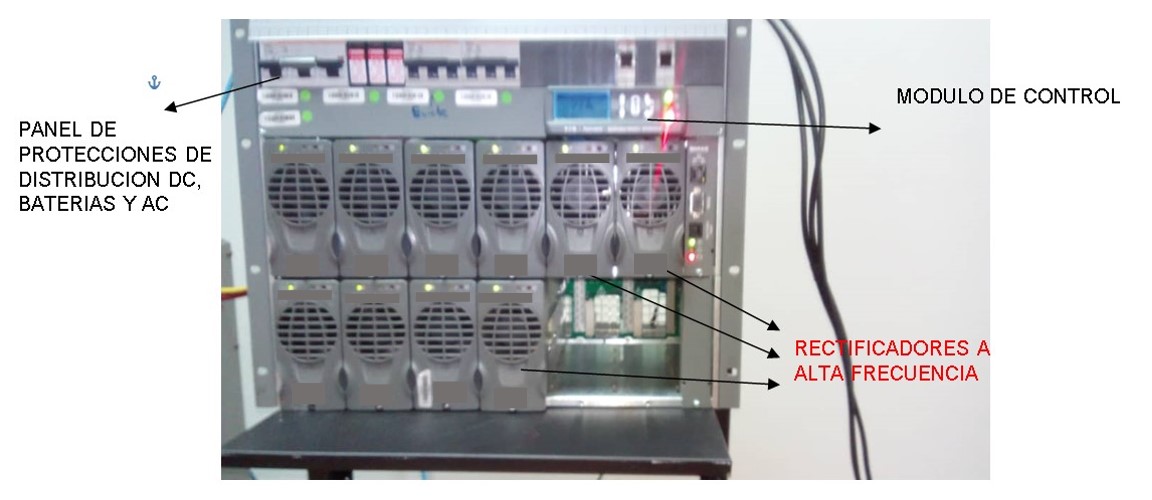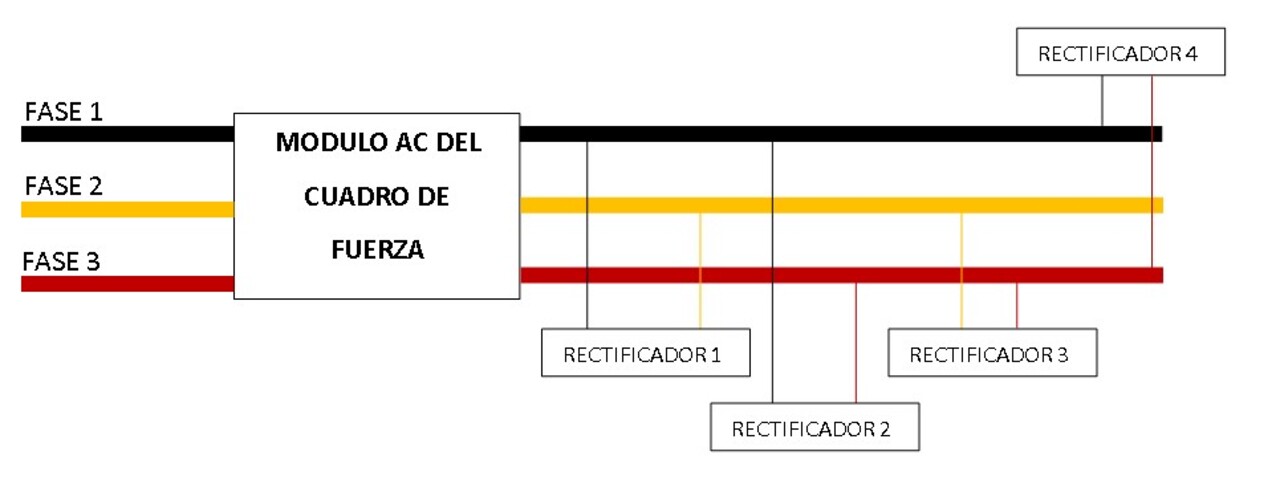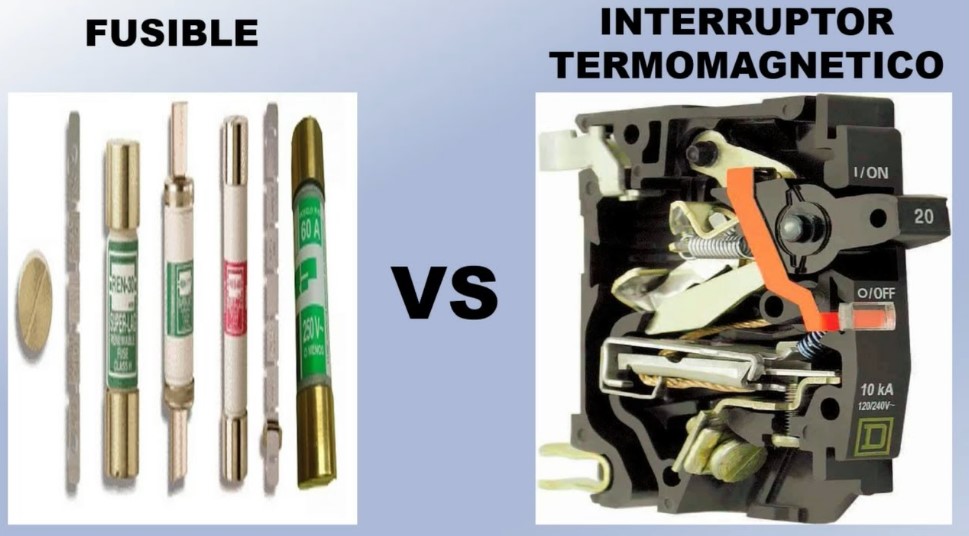Sistemas de Energía DC/AC
Components of the force frame. Part 1
The force frame is the heart and brain of the telecommunications power system, but… do you know its parts? If not, be sure to read this post where we will describe the components of the force frame.
Before we start, we encourage you to read our article What is a power panel in telecommunications? It will serve as an introduction to this exciting topic and to clarify some of the terms that we will handle.
The telecommunications power panel is made up of different modules, all aimed at a common goal: the uninterrupted and reliable telecommunications power supply with DC current.
We will now talk about the general characteristics of each one of them.
1. AC Power Module as one of the components of the power distribution panel

This is the module in charge of receiving AC electricity, it has protections for each power supply line. Another characteristic is that, in general, they receive three-phase AC power.
Internally, they distribute the AC power to each rectifier, depending on its configuration in the Rectifier Module.
For example, there are power systems where the AC – DC rectifiers are two-phase, that is, they are fed from two phases, but the power panel requires three-phase power.
Internally, the power panel is configured in such a way that each space to be occupied by a rectifier has 2 phases.
This distribution is made in such a way that all phases feed the same number of AC – DC rectifiers so that the AC electrical system is as balanced as possible. To make it clearer, here is an illustrative block diagram.

Care must be taken with the gauge of the conductor to be connected, since they have terminals that limit this factor.
2. Curiosity: why electrical fuses are used instead of circuit breakers in the AC input of the power panel?

Both elements act as protection against overloads, short circuits and overcurrents, which is why they are installed in series in each line to interrupt the current.
Although it seems that circuit breakers are the best option, since they can be quickly replaced without any additional activity, electrical fuses are the most used for technical reasons.
Here are these reasons.
- Fuses are faster and more sensitive in detecting the fault and interrupting the current
- Although they must be replaced when operating, electric fuses are much more economical in the short, medium and long term
- In the case of circuit breakers, they are bulkier than the fuse including its respective fuse holder
- In any case, electric fuses do not require maintenance while circuit breakers do
- Since fuses are disposable after their operation, they can be replaced to determine and correct the causes of the overcurrent.
Circuit breakers can be very easily replaced by unqualified personnel who often tend to ignore the causes in case the circuit breaker «normalizes», so the cause remains hidden.
As you can see, there are multiple advantages of fuses over circuit breakers, which is why they are preferred as electrical protection.
Up to here
We will continue to tell you about the different modules of components of the force frame. Of this device in our post Parts of the telecom power panel. Part 2 that we are preparing.
If you liked this article, let us know in the comments, also, if you have any questions do not hesitate to contact us, we are always available for you. We also encourage you to register to receive relevant information on this topic.
We also invite you to read the contents that energydcac has for you, about the exciting world of energy for telecommunications, in our category AC/DC energy.
In the DC power systems sizing and design course for telecommunications and critical systems, you will find everything about the usage of this equipment. If you click here, you will discover everything it contains and the areas it covers. Make it yours now!
There we detail, in a very simple way, everything you need to know to understand our articles. Check them out and you will see!
Image sources
– energydcac.com
– sme-soluciones.es

